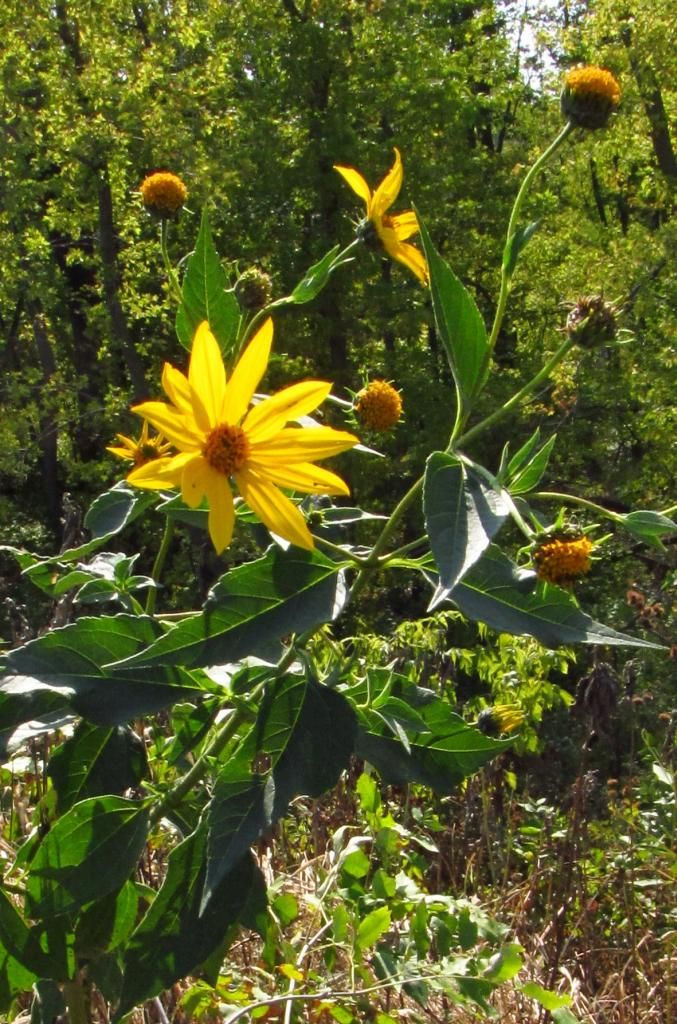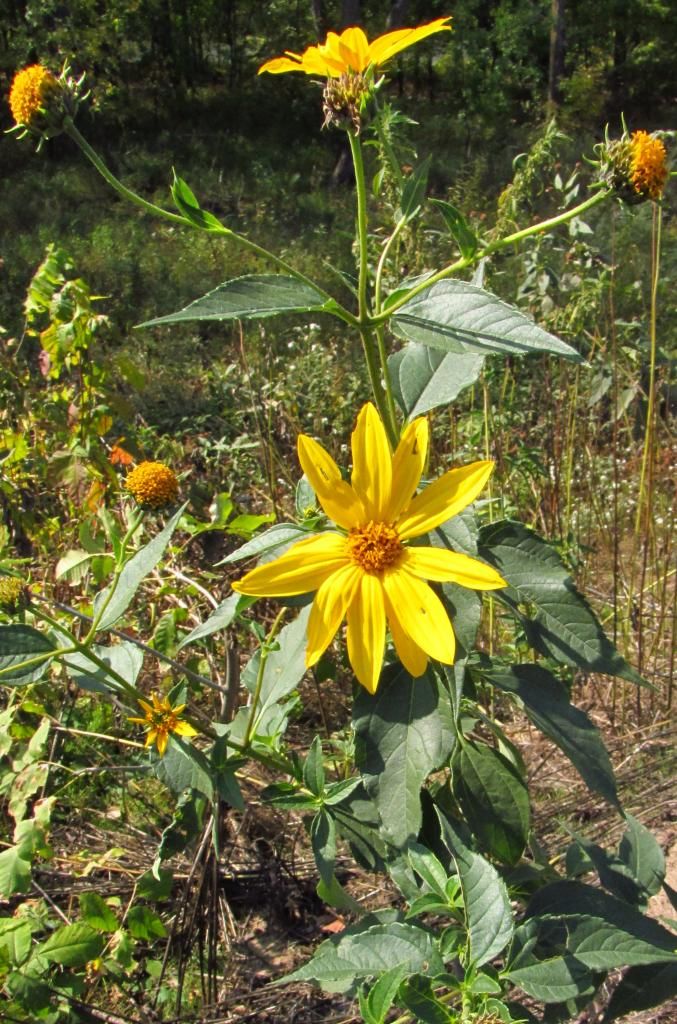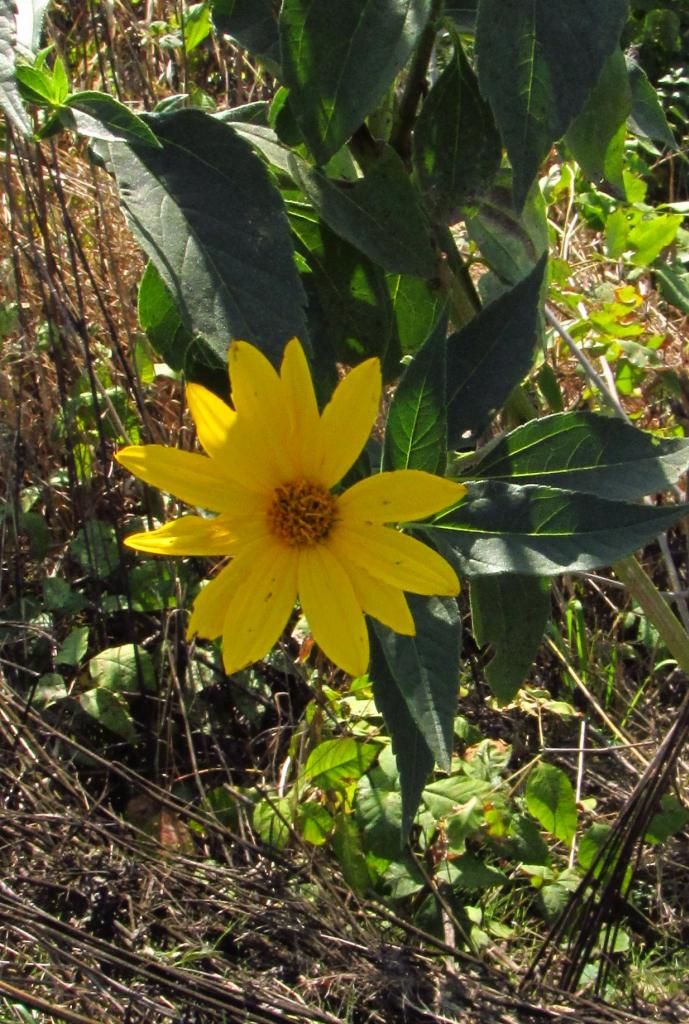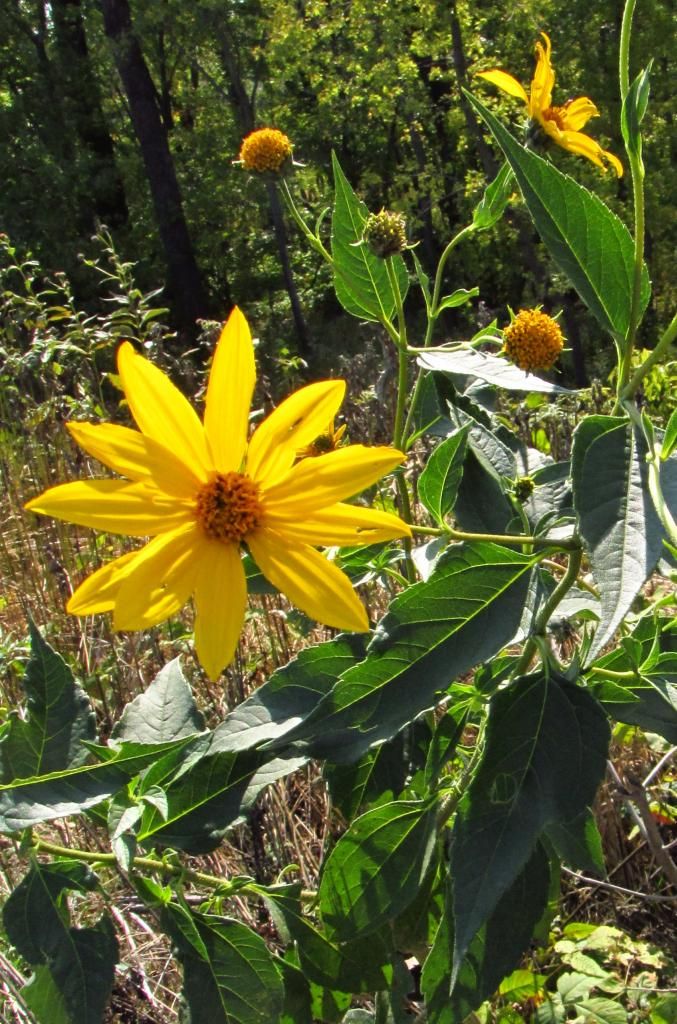I am notoriously bad at distinguishing the yellow asters of late summer, but as far as I know, I have enclosed several pictures of Jerusalem artichoke after the jump. The surefire way to confirm the ID would have been to dig around the plant looking for tasty and healthful potato-like tubers, but I didn’t want to disturb any soil on public land. I hope some native plants experts in the Bleeding Heartland community will correct me if I have featured the wrong wildflower.
This is an open thread: all topics welcome.
Jerusalem artichoke (Helianthus tuberosus) is not related to artichokes and is not indigenous to the Middle East. Rather, it’s a member of the aster family that is native to most of the U.S. and Canada. According to many sources, English-speaking people heard the common name “girasole” (meaning “turning toward the sun” in Italian) as “Jerusalem.”
The U.S. Wildflowers website contains some beautiful photos of Helianthus tuberosus and describes some key features of the plant.
The bright yellow blossom of Jerusalem Artichoke will have 10 to 20 ray flowers each up to about an inch and a half long. The yellow disk is typically up to an inch across.
The bright yellow blossom of Jerusalem Artichoke will have 10 to 20 ray flowers each up to about an inch and a half long. The yellow disk is typically up to an inch across. […]
Jerusalem Artichoke can be up to 10 feet tall, with one to several stems terminated with a cluster of one or more blossoms.
Sylvan Runkel and Alvin Bull describe other parts of the plant in Wildflowers of Iowa Woodlands.
The rough coarse hairy stem, often branched toward the top, grows to 12 feet high. Its thick coarsely-toothed leaves have short petioles and conspicuous veins. They are broadly lance-shaped to 9 inches long and 3 inches wide. Their surfaces are rough and hairy above, downy beneath. Lower leaves are opposite or in whorls of three. Upper leaves are alternate.
In Iowa, Jerusalem artichoke usually starts blooming in August and continues into October. I took these photos last week. You’ll often see these plants growing near the edges of woodlands, but they can thrive in many different habitats. Although Jerusalem artichoke tends to grow in large colonies, you may sometimes see it in smaller groups.
This plant is an outstanding food source.
This large, coarse sunflower was cultivated by Native Americans of the Great Plains and has spread eastward. The edible tuber is highly nutritious and, unlike potatoes, contains no starch, but rather carbohydrate in a form that is metabolized into natural sugar. In 1805 Lewis and Clark dined on the tubers, prepared by a native woman, in what is now North Dakota. Today they are sold in produce markets stores and, when boiled or roasted like potatoes, are delicious. Raw, they have a sweet, nut-like taste.
In stores or farmers markets, you might see these tubers called “sunchokes” rather than Jerusalem artichokes.
According to the Illinois Wildflowers website, many kinds of animals feed on Jerusalem artichoke plants.
Bees are the most important pollinators, although the flowers are also visited by bee flies, wasps, beetles, and butterflies. Among the bees, are such visitors as bumblebees, Miner bees, Halictine bees, and Panurgine bees. The flowers are usually cross-pollinated by these insects, and rarely become self-pollinated. The caterpillars of the butterflies Chlosyne nycteis (Silvery Checkerspot) and Chlosyne gorgone (Gorgone Checkerspot) eat the foliage. Similarly, the caterpillars of many moths and other insects feed on various parts of Jerusalem Artichoke, including Pyrrharctia isabella (Isabella Tiger Moth), Papaipema rigida (Sunflower Borer Moth), Papaipema rigida (Rigid Sunflower Borer Moth), and Stibadium spumosum (Frothy Moth). Other kinds of insects that feed on this plant include Publilia concava (Treehopper sp., semi-shaded situations), Melanoplus angustipennis (Spur-Throated Grasshopper sp.), and various beetles. The large nutritious seeds are avidly consumed by various upland gamebirds, songbirds, and small mammals (see Wildlife Table). Large herbivores, such as livestock and deer, may eat the leaves and flowers. Occasionally, the stems are used by muskrats and beavers for their dens or dams.





